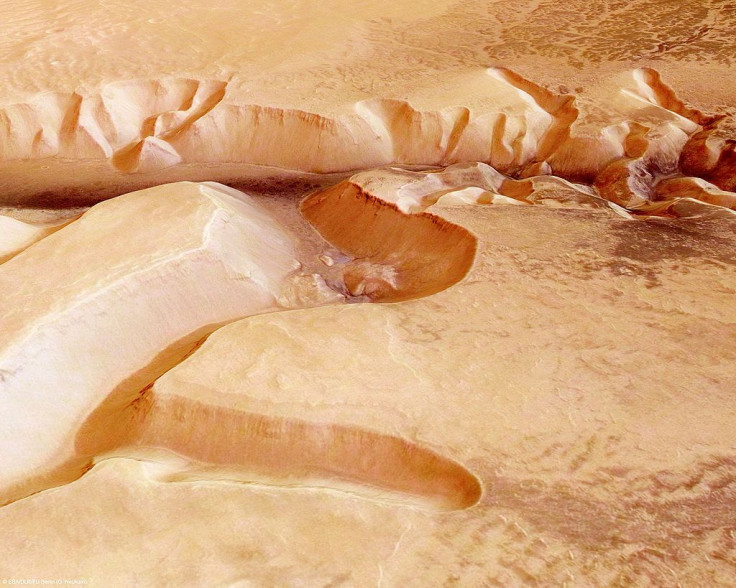Stunning Mars Photo Showing Impact Crater Has Some Confusing It For Jupiter

A new Mars image taken by NASA would have some confusing it for Jupiter.
NASA recently released a new snapshot of the Red Planet obtained by the Mars Reconnaissance Orbiter HiRise camera. The orbiter's mission team, which operates out of the University of Arizona, shared the image on Twitter, giving it the title "Still Life with an Impact Crater."
HiPOD 31 May 2019: Still Life with an Impact Crater
— HiRISE: Beautiful Mars (NASA) (@HiRISE) May 31, 2019
Ice fill within a crater in the north polar layered deposits may be a site where accumulation could be observed, helping to settle a long-term problem in Mars polar science.
NASA/JPL/UAhttps://t.co/SNerXGr43y pic.twitter.com/721PHDOvcB
As the title suggests, the new image taken on May 31 shows a close-up view of Mars' surface, highlighting a round crater disrupting the north polar layered deposits (NPLD). According to a statement from HiRise website, the image will help scientists gain a better understanding of Mars' polar regions.
"Ice fill within a crater in the north polar layered deposits (NPLD) may be a site where accumulation could be observed, helping to settle a long-term problem in Mars polar science: are the NPLD currently gaining or losing mass?" the HiRise team wrote.
As for why some might be confusing Mars for Jupiter due to the photo, the view shown of the Red Planet bears a resemblance to the gas giant's exterior in a stunning image previously taken by the NASA/ESA Hubble Space Telescope.
So, you've seen the new image of Jupiter but want to know more? Check out this video on all things Jupiter!
— Hubble (@NASAHubble) April 6, 2017
WATCH: pic.twitter.com/Y3LD9zs3iV
The Hubble image taken April 3, 2017 showed a spectacular view of Jupiter, which appears to be divided into "several distinct, colorful bands, parallel to the equator," according to the Hubble team's description. The colorful bands actually comprise ammonia ice clouds and only appear layered due to differences in thickness and height.
Like the Mars image, the bands are disrupted by a large round formation, though for Jupiter it is the famed Great Red Spot, and this has some seeing double. Unlike Mars' impact crater, however, Jupiter's Great Red Spot is a storm larger than the size of the Earth and has been spinning for at least 150 years.
This wouldn't be the first time that people have seen some similarities between Mars and Jupiter despite the massive difference in their sizes. NASA previously pointed out familiar shapes within Jupiter's colorful clouds, such as a dolphin and even a dragon.
On the other hand, images of Mars' surface has shown rocks resembling a fish and alien faces.

© Copyright IBTimes 2024. All rights reserved.





















